Politics
The history of the White House

With the Presidential odds pointing in Joe Biden’s favour, it seems possible that Donald Trump might end up having to pack his bags and move out of Washington’s White House. Over the years, the White House has been a home to almost every US President who has served a term for their country, although it’s certainly received many facelifts since it was first built.
George Washington was the country’s first ever president, and ahead of his second term in the role, in 1791, he selected the site where the White House would be built. The cornerstone for the structure was laid by 1792, and soon after, a design submitted by Irish-born architect James Hoban was agreed upon. Washington never actually got the chance to live in the finished residence, as it wasn’t completed until after his death. The first president to occupy the White House was John Adams, alongside his wife Abigail, in 1800, after a lengthy eight years of construction.
Thomas Jefferson and James Madison served as presidents respectively, however a few years after Madison was elected, the War of 1812 began, and the British set fire to the White House in 1814. Once these fires were put out, James Hoban was brought back in to rebuild the structure, ready for President James Monroe to move in by 1817. During Monroe’s administration, the house was further expanded – with the South Portico being constructed in 1824. Five years on, and President Andrew Jackson also oversaw an addition to the White House, the North Portico, which was built in 1829. During the latter half of the 19th century, there were even more proposals to significantly expand the President’s residence, as well as one that suggested building an entirely new house for future presidents to live in, but these plans never came to fruition.
By 1902, Theodore Roosevelt had been elected and subsequently began a major renovation of the White House. He went on to have the presidential offices relocated over to a newly constructed Executive Office Building, which is now known as the West Wing. Dubbed as the “Roosevelt renovation”, these plans were carried out by a famous New York architectural firm called McKim, Mead and White. President William Howard Taft was Roosevelt’s successor, as well as the man who had the globally recognised Oval Office originally constructed.
Almost 50 years on from Roosevelt’s overhaul renovation, the White House began to look a little worse-for-wear, showing signs of structural weakness. President Harry S. Truman was in office at the time, and decided to order yet another major renovation, in which the entire inside of the building was dismantled and reconstructed. Finally, by 1952, the work was complete and the Truman family could move back into the White House.
Since John Adams came into office, every US President that’s followed has lived in the White House, and made their own adjustments along the way. The White House holds the purpose of not only the home of the current president and his family, but also a museum of American history.
Quick facts:
- The White House needs 570 gallons of paint to cover the entirety of its outside surface.
- The White House has previously been known as the “President’s Palace”, the “President’s House” and the “Executive Mansion”.
- President Roosevelt is the one who originally gave the White House its name, in 1901.
Politics
Makinde Renames Polytechnic After Late Ex-Gov
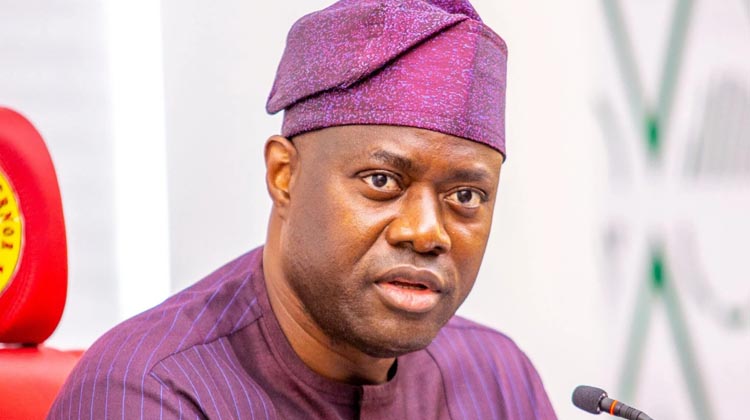
Oyo State Governor, ‘Seyi Makinde, has renamed The Polytechnic, Ibadan as Omololu Olunloyo Polytechnic, Ibadan, in honour of a late former governor of the State, Dr Omololu Olunloyo.
Dr Olunloyo, who died on April 6, 2025, was the pioneer Principal of the Polytechnic, Ibadan, while he also served as Governor of Oyo State between October 1 and December 31, 1983.
Governor Makinde made the announcement at the state interdenominational funeral service held yesterday in honour of the late former governor at the Obafemi Awolowo Stadium, Liberty Road, Ibadan.
Governor Makinde said Dr Olunloyo lived an eventful life, adding that his attainment and personality could not be summarised in one sentence.
“He was not a man we could summarise in one sentence. He was a scholar, a statesman, a technocrat, a lover of culture and, above all, a man of deep conviction.
“While giving the exhortation, I was listening to Baba Archbishop Ayo Ladigbolu and he said in 1983, Baba became Governor of Oyo State. Though his time in office was brief, his election victory over a popular incumbent remains a powerful testament to the trust people gave him.
“I talked about preserving and digitising his library yesterday [Wednesday] as a mark of honour to Baba Olunloyo.
“Today, we will be giving Baba another honour to immortalise him. He was the first Principal of The Polytechnic, Ibadan; that institution will now be named Omololu Olunloyo Polytechnic, Ibadan.”
Earlier in his sermon, a retired Methodist Archbishop of Ilesa and Ibadan, Ayo Ladigbolu, described the late Olunloyo as a role model with intellectual inspiration and unassailable integrity.
The cleric said the deceased also demonstrated leadership in most superior quality during his lifetime.
In attendance were the state Deputy Governor, Chief Abdulraheem Bayo Lawal; wife of a former Military Governor of the old Oyo State, Chief (Mrs) Dupe Jemibewon; wife of a former Governor of Oyo State, Chief (Mrs) Mutiat Ladoja; former Deputy Governor and PDP Deputy National Chairman (South), Ambassador Taofeek Arapaja; and former Deputy Governor, Hazeem Gbolarumi.
Others were the member representing Ibadan North-East/South-East Federal Constituency, Hon Abass Adigun Agboworin; Chief of Staff to the Governor, Otunba Segun Ogunwuyi; Oyo State Exco members; Chairman of Oyo State Elders’ Council, Dr Saka Balogun; Chairman of All Local Government Chairmen in Oyo State, Hon Sikiru Sanda; President-General of the Central Council of Ibadan Indigenes (CCII), Chief Adeniyi Ajewole; religious leaders and family members, among other dignitaries.
Politics
10 NWC Members Oppose Damagum Over National Secretary’s Reinstatement
Ten members of the Peoples Democratic Party (PDP) National Working Committee (NWC) have countered the Acting National Chairman, Umar Damagum, on the reinstatement of Senator Samuel Anyanwu as National Secretary.
The dissenting members, led by the Deputy National Chairman ( South), Taofeek Arapaja, in a joint statement, said no organ of the opposition party could overturn the decision of the 99th meeting of the National Executive Committee (NEC).
The dissenting NWC members include Arapaja; Setonji Koshoedo, Deputy National Secretary; Okechukwu Obiechina-Daniel, National Auditor; Debo Ologunagba, National Publicity Secretary; Ologunagba; Woyengikuro Daniel, National Financial Secretary and Ahmed Yayari Mohammed, National Treasurer.
Others are Chief Ali Odefa, National Vice Chairman (South East); Emmanuel Ogidi, Caretaker Committee Chairman (South South); Mrs. Amina Darasimi D. Bryhm, National Woman Leader and Ajisafe Kamoru Toyese, National Vice Chairman (South West).
The group also insisted that contrary to the position of the acting National Chairman, the 100th NEC meeting of the party would be held on June 30 as earlier scheduled.
The statement read: “The attention of the National Working Committee (NWC) of the Peoples Democratic Party (PDP) has been drawn to a press briefing by the acting National Chairman, Amb. Umar Damagum, today Wednesday, June 25, wherein he attempted to overturn the resolution of the 99th National Executive Committee (NEC) meeting which scheduled the 100th NEC meeting for Monday, June 30.
“The acting National Chairman in the said press briefing also reportedly announced that Senator Samuel Anyanwu has been asked to resume as National Secretary of the party contrary to the resolution of the 99th NEC meeting, which referred all matters relating to the office of the National Secretary to the 100th NEC meeting.
“The pronouncements by the acting National Chairman have no foundation as no organ of the party (including the NWC), individual or group has the power to cancel, overrule, veto or vary the resolution of the National Executive Committee (NEC) under the Constitution of the PDP (as amended in 2017).
“For the avoidance of doubt, the NEC is the highest decision-making organ of the party, second only to the National Convention. By virtue of Section 31 (3) of the PDP Constitution, the resolution of the NEC to hold its 100th meeting on Monday June 30, is binding on all organs, officers, chapters and members of the party and no organ, group or individual can vary or veto this resolution of NEC.
“Furthermore, the claim by Damagum that Sen Anyanwu has been asked to resume office as the National Secretary of the party is, therefore, misleading being contrary to the resolution of NEC.
“In the light of the foregoing, the 100th NEC meeting as scheduled for Monday, June 30, has not been canceled or postponed.”
Politics
Presidency Slams El-Rufai Over Tinubu Criticism …Says He Suffers From Small Man Syndrome
The Special Adviser to President Bola Tinubu on Information and Strategy, Bayo Onanuga, has fired back at former Kaduna State Governor, Nasir El-Rufai, following the latter’s scathing criticism of President Tinubu’s administration and his 2027 re-election prospects.
In an interview on live television, Mallam El-Rufai said it would take a “miracle” for President Tinubu to be re-elected in 2027, citing an internal poll that purportedly shows a 91 percent disapproval rating for the president across key regions in the country, including the South-East and the North. He also claimed that President Tinubu’s disapproval rating in Lagos stood at 78 percent.
Reacting on Wednesday via a post on X (formerly Twitter), Mr Onanuga took a swipe at the ex-governor, quoting a harsh assessment of Mallam El-Rufai’s character from former President Olusegun Obasanjo’s memoir, My Watch.
“Nasir’s penchant for reputation savaging is almost pathological,” Mr Onanuga wrote, citing Chief Obasanjo’s words. “Why does he do it? Very early in my interaction with him, I appreciated his talent. At the same time, I recognised his weaknesses; the worst being his inability to be loyal to anybody or any issue consistently for long, but only to Nasir El-Rufai.”
The presidential adviser emphasised Chief Obasanjo’s remarks that Mallam El-Rufai often tries to elevate himself by diminishing others. “He lied brazenly, which he did to me, against his colleagues and so-called friends,” Mr Onanuga continued, quoting the former President. “I have heard of how he ruthlessly savaged the reputation of his uncle, a man who, in an African setting, was like a foster father to him.”
Chief Obasanjo, who appointed Mallam El-Rufai as the Minister of the Federal Capital Territory between 2003 and 2007, did not mince words in the memoir, describing Mallam El-Rufai as suffering from “small man syndrome.”
Mr Onanuga’s post is seen as a direct rebuttal to Mallam El-Rufai’s recent criticism and growing opposition role. The former governor is reportedly playing a central role in forming a new coalition to challenge President Tinubu in the 2027 general election.
In March 2025, El-Rufai officially dumped the All Progressives Congress (APC) and joined the Social Democratic Party (SDP), intensifying speculations about his 2027 political ambitions.
As the political rift deepens, Mallam El-Rufai remains one of the most vocal critics of the Tinubu administration, while Mr Onanuga and other presidential allies continue to push back against what they describe as “reckless” opposition rhetoric.
-
Sports5 days ago
Spanish Football Fires Entire Refereeing Committee
-
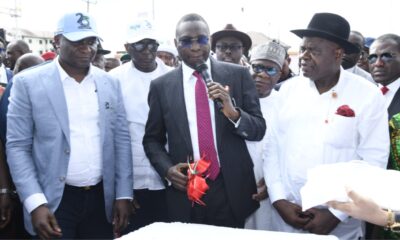
 Features4 days ago
Features4 days agoBetween EFCC And NDDC: Strategic Alliance For Niger Delta
-
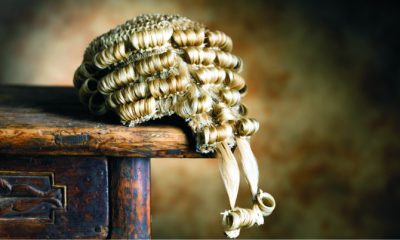
 News4 days ago
News4 days agoCourt Sentences Gospel Singer To Death For Killing Girlfriend In Nasarawa
-
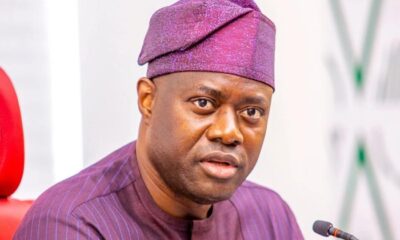
 Politics4 days ago
Politics4 days agoMakinde Renames Polytechnic After Late Ex-Gov
-
Sports5 days ago
Olympic Day Sparks Nationwide Fitness Fever
-

 Nation4 days ago
Nation4 days agoOgoni Stakeholders Hail Zabbey’s Performance
-
Sports5 days ago
I Joined Saudi League To Win Titles – Senegal Keeper
-
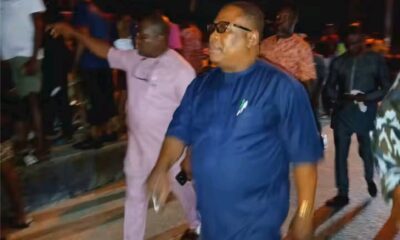
 Niger Delta4 days ago
Niger Delta4 days agoOBALGA Sole Administrator Presents Brand New Fire Extinguishers To Council …Commiserates With Traders Over Rumuomasi Market Fire Incident …Commences Desilting Of Drainages

